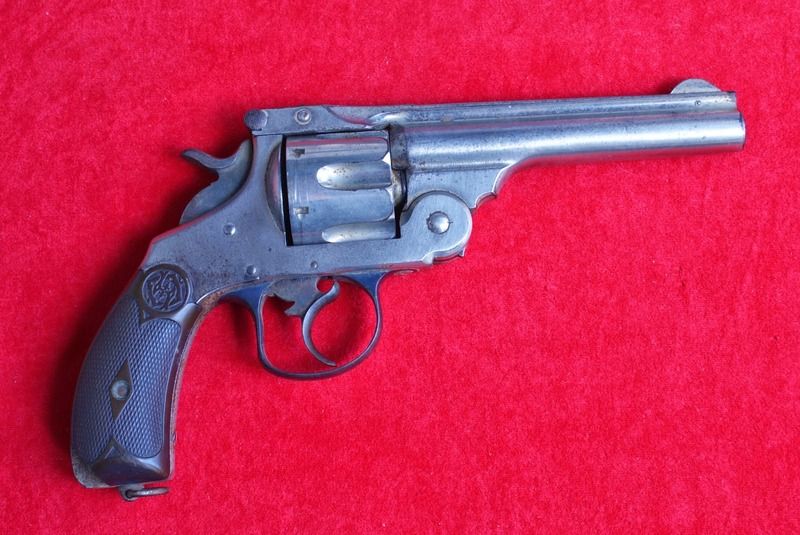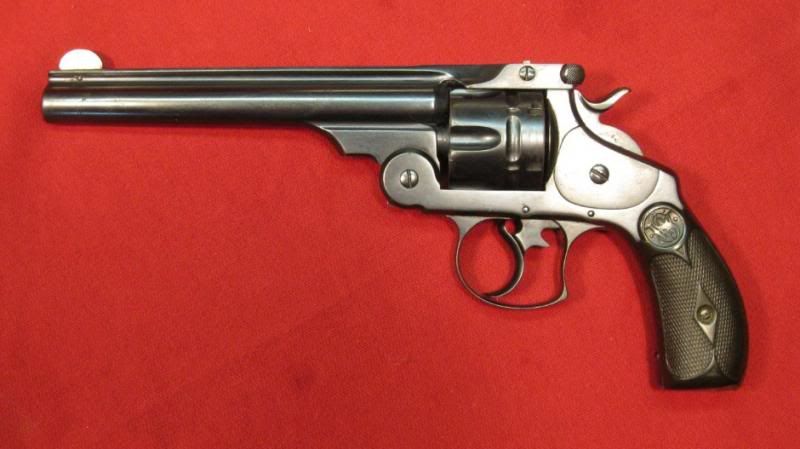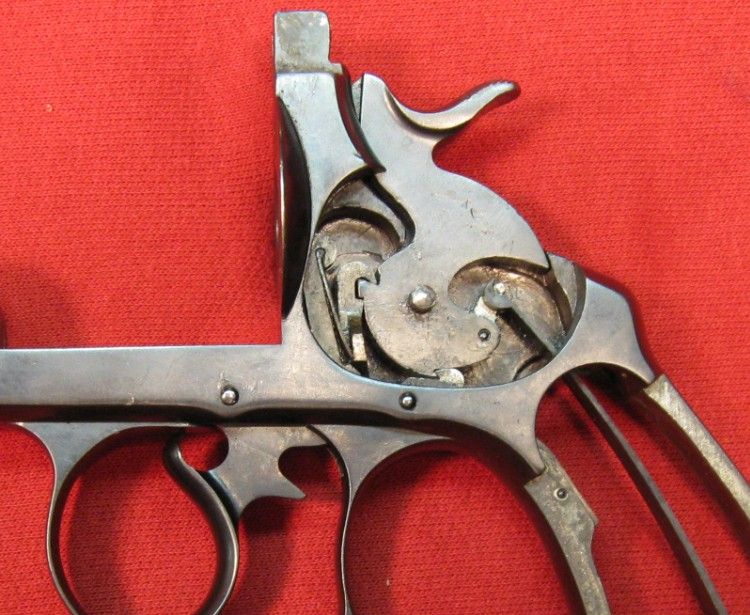In the Spanish factories of that day, the main power tool was a file and Julio's hand, arm, and skill.
Howdy Again
Actually I doubt that. There is no reason why the Spanish factories could not have been using pattern following milling equipment not too different from what Smith and Wesson was using when they made the side plate for this Double Action 44. This gun was over polished and refinished at some point, and that makes the outline of the side plate show up very well.
Here is a view of the recess where the side plate sits. Notice it is not a regular shape, but an oblong, irregular shape. S&W was using pattern following equipment since the 1850s to cut the intricate contours of side plates and the matching recesses in the frames to receive the side plates. When the parts came off the machines, they probably needed very little hand filing to make them fit perfectly.
Any outfit that was mass producing complicated products with intricate parts would have been using the latest technology to produce the parts. I doubt if Orbea Hermanos would have been a profitable concern if they had been depending on Julio's skill to make side plates one at a time with his file. And judging from what I have seen on the Web, OH produced a boatload of guns.
In today's world where many folks seem to think the only way to mass produce complex parts is with CNC, many have lost sight of the fact that technologies existed well over 100 years ago to mass produce complex parts long before any body dreamed up the computer. Mass producing parts such as this is exactly what pattern following milling equipment was good at.
But of course, it only becomes profitable with the economies of scale. Making one side plate probably would require an endless amount of cut and try, cut and try, until the fit was perfect. That would be expensive, skilled hand labor.















